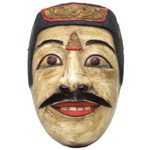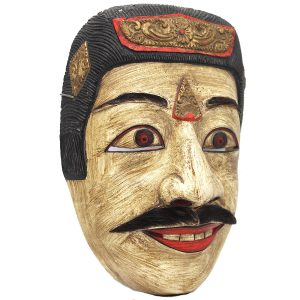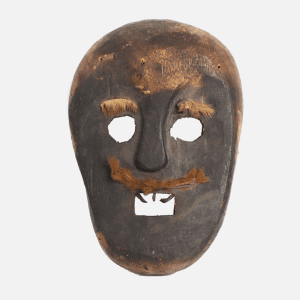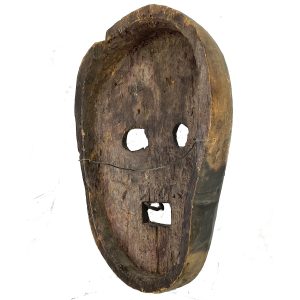Showing 49–54 of 54 results
-


$1,750.00
This rare, vintage spirit mask is from Timor in Indonesia. Their animism is characterized by ritual exchanges between individuals or social groups with ancestral and fertility spirits having a close reciprocal link between the deceased and the secular world as ancestors require sustenance, respect and attention (i.e. offerings), while humans seek advice, good fortune, health…
-


$485.00
The culture, rituals, tribal and ethnic art of the Dayak (Dyak) of Kalimantan (Borneo), Indonesia is a mix of shamanism, animism and ancestor worship. Dyak festival masks worn on the face or large ones attached to a costume repel malicious spirits from entering communal spaces, insure village safety, protect babies in their carriers and defend…
-


$1,050.00
H: 23.375” W: 13 W: 6” | FOR SHIPPING INFORMATION CONTACT US AT 213-568-3030 or [email protected]
This vintage hudoq Dayak ancestor mask has traditional Dayak features: wing-like separately carved ears attached with rattan that, like this, usually is replaced; long extended triangle nose, rounded arabesque-like ears and eye-holes, gnarled teeth, and geometric and curvilinear painted decorations. This one of three VA masks featured in collection of the Green Goblin in the 2002 Spiderman movie and is set on a museum-quality metal stand.
-


$675.00
The religion of the ethnic Dayak (Dyak) people of Kalimantan (Borneo), Indonesia is a mix of animism, shamanism and ancestor worship. Their word hudoq describes three different things: it describes the pests that can destroy the rice harvest on which their survival depends; the name of the huge yearly Dyak planting celebration and the name…
-


$105.00
All ethnic mask (topeng) dances in Bali are accompanied with music from a gamelan percussion orchestra as are dramas and other entertainments considered as offerings to honor, please and attract the favor of the gods and ancestral spirits. In the west dancers put on masks to pretend they are someone else. Balinese dancers become the…
-
Sale!


$495.00 Original price was: $495.00.$325.00Current price is: $325.00.
H: 12.5″ W: 8.625″ D: 2.75″ | FREE SHIPPING IN CONTINENTAL U.S.!
Timor masks like this are rare and characterized by large roughly cut eyes, the absence of some teeth and the remaining ones being menacing. They are stored in the rafters above the house hearth accounting for their smoky black color. Often decorated with animal hide with hair, the facial pieces have either not darkened fully in the rafters or, when placed on top of each other, did not darken evenly. Frequently a bit threatening due to the black color, missing teeth and their frequent lack of balance, these ancestral masks are used in offering rituals designed to drive off malevolent spirits.
End of content
End of content












